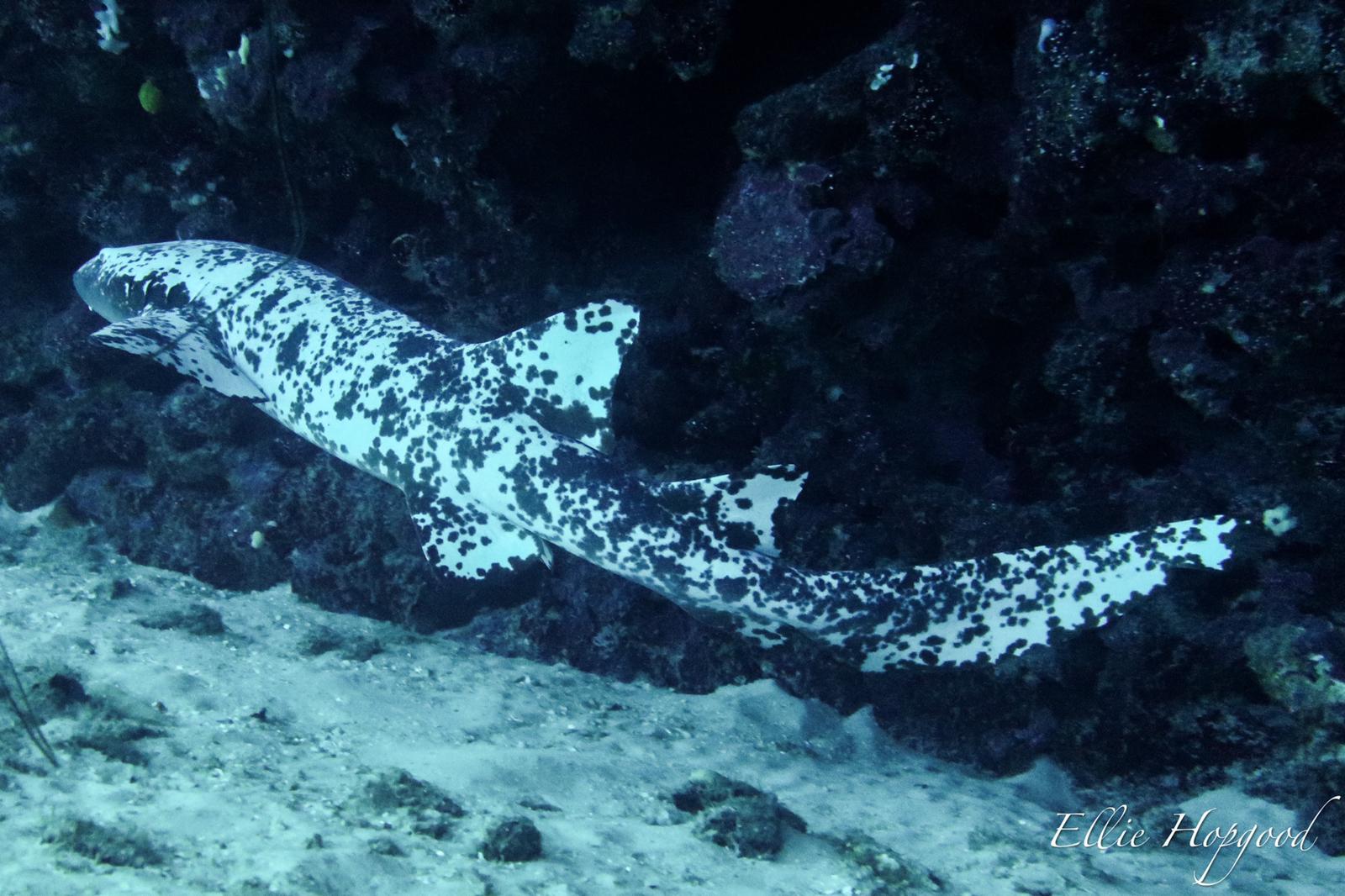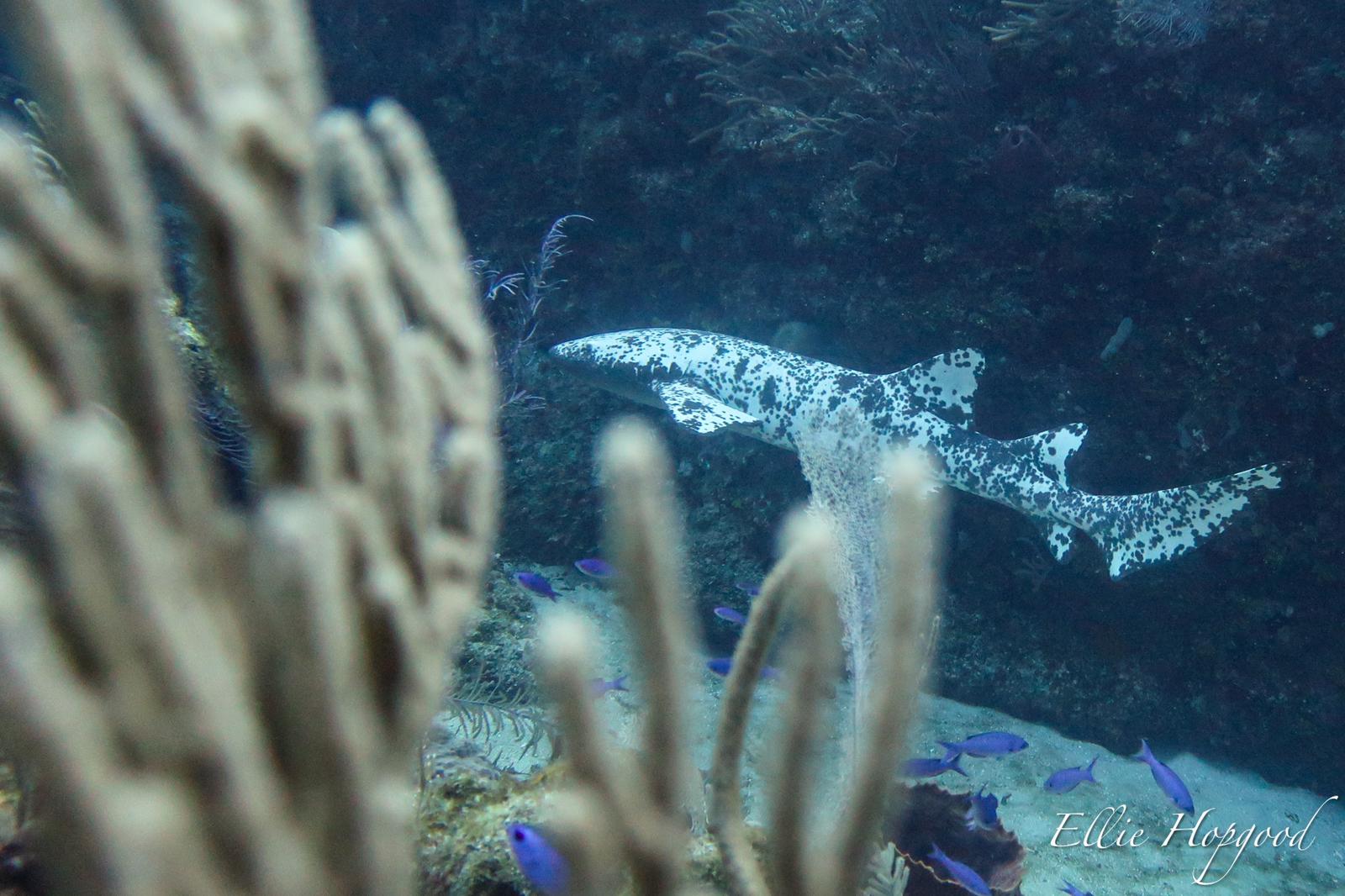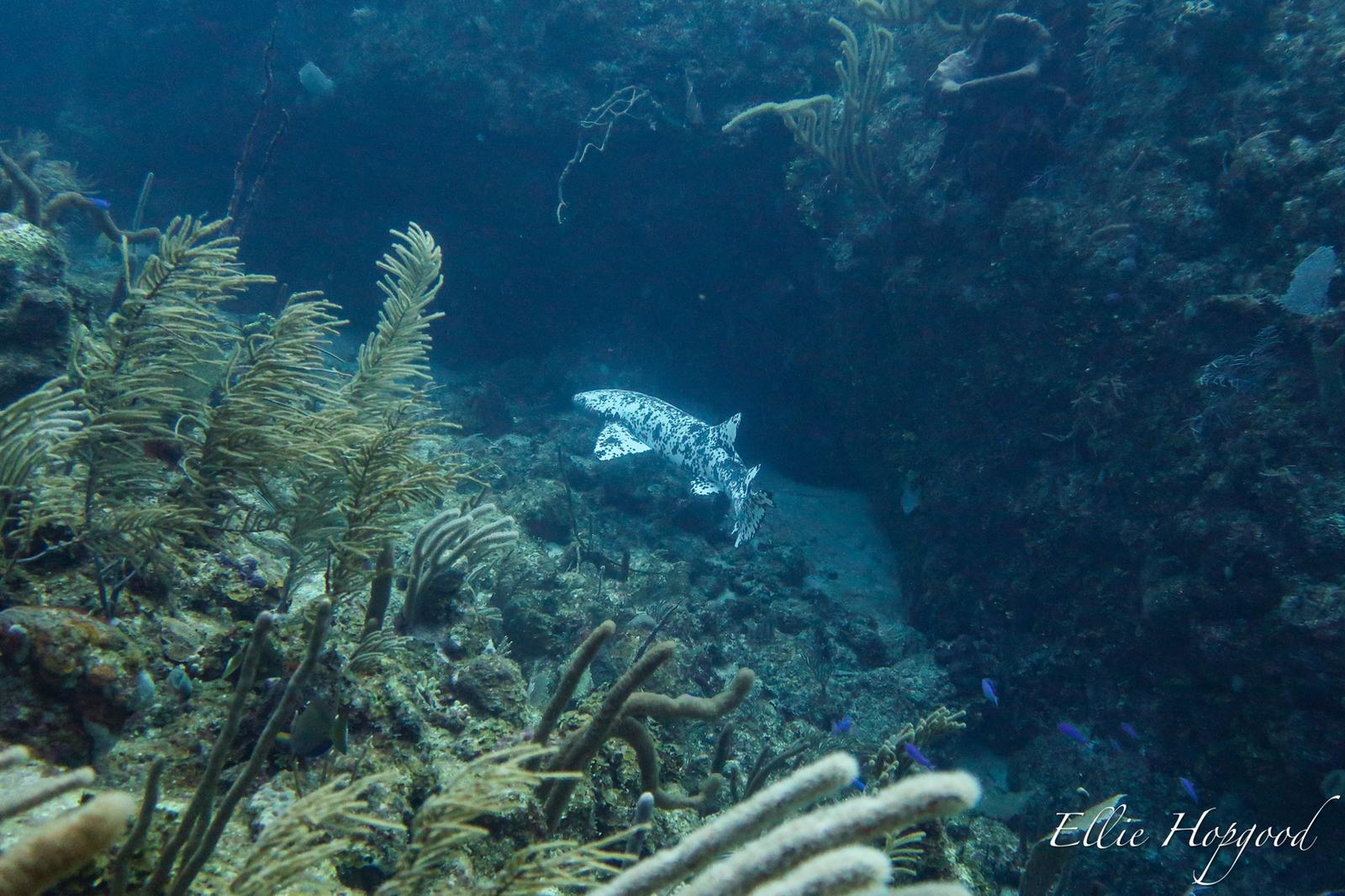Marine Life & Conservation
Nurse Shark with rare skin pigmentation recorded in Honduras

One of the defining features of nurse sharks is a brown coloration that is present over their entire body. However, earlier this year, recreational divers in Utila, Honduras stumbled upon a unique individual with a rare condition that completely alters the typical pigmentation pattern in the skin.
The finding was recently published in a new study, “Observations of hypomelanosis in the nurse shark Ginglymostoma cirratum,” in the Journal of Fish Biology, led by researchers at Beneath The Waves (BTW). Working with members of the Caribbean Shark Coalition, the team at BTW saw this reported finding as an opportunity to emphasize the value of citizen science for shark and ray conservation. The diverse, non-traditional author list of this publication demonstrates that science can and should be made accessible to those beyond the scientific community in order to add to the scientific database of sharks, marine life, and marine habitats.
This sighting became the first documented account of a nurse shark with piebaldism, a rare skin condition that results in a partial loss of body pigmentation, with eyes remaining as their regular coloration. The unique coloring made this nurse shark easily identifiable, and the divers saw it on two different dives in two different locations.
Piebaldism is part of a larger suite of pigmentation deficiencies called hypomelanosis. This includes albinism, which results in a complete loss of pigmentation in the skin and iris, and leucism which causes total or partial loss of body pigment and a blue coloration to the iris and body.
Hypomelanosis is incredibly rare in the animal kingdom, particularly in sharks, skates, and rays. Only about 5% of these species have been documented with these conditions, one being a tawny nurse shark with albinism, and another being a nurse shark with leucism.
In nature, if an animal relies on camouflage to hunt or avoid predation, unusual skin conditions could affect its ability to do this successfully, ultimately impacting its chance of survival. With the rarity of these conditions in sharks, little is known about their effects.
This particular individual was about an average size for the species, at approximately 6 feet in length. Because of this size, we can assume that it has been able to hunt and avoid predators successfully to reach maturity. Since nurse sharks have a generalist lifestyle where they eat a wide range of foods and can survive in a variety of conditions, this was somewhat expected. Even so, this rare observation calls for more research on the potential consequences of hypomelanosis on the survivability of sharks, skates, and rays. This is only the second time this species has been scientifically documented to have a skin condition that can affect their pigmentation.
Photos: Ellie Hopgood.
Marine Life & Conservation
Go Diving Show 2025 UK Stage Speaker: Roisin Maddison

Underwater photogapher and avid UK diver Roisin Maddison will be taking to the UK Stage at the GO Diving Show in March to discuss why she loves diving off our coastline.
Roisin will be talking about her passion for our native species, UK diving and why it isn’t just deep, dark and cold.
Go Diving Show 2025 takes place at the NAEC Stoneleigh Park, Coventry, on the 1st -2nd March.
Marine Life & Conservation
ARC marine Celebrates “Commended” Award at Underwater Photographer of the Year with reef cube image

ARC marine is pleased to announce that a picture taken at one of their reef cube reef sites in
Torquay, Devon has received a “commended” award in the “British Waters – Living Together”
category at the 2025 Underwater Photographer of the Year competition. The image, taken by
underwater photographer James Harris, features a crab comfortably nestled inside one of the reef cubes.

The image reflects the role that ARC marine’s reef cubes play in offering shelter and security for marine creatures, providing them with a place to thrive within the marine environment.
ARC marine’s Mission to Restore Marine Ecosystems ARC marine’s reef cube technology is designed to enhance marine habitats by creating complex, biodiverse artificial reefs. These structures are placed on the seabed to support various marine species, such as crustaceans, fish, and molluscs. The reef cubes aim to restore ecosystems, improve water quality, and provide a safe space for marine life to grow and develop.
“We’re excited to see one of our reef cube sites recognised at the Underwater Photographer of the Year awards,” said Tom Birbeck, Founder & CEO of ARC marine. “This image is a great representation of how these structures create safe spaces for marine life, and we’re proud to see the marine life of Devon recognised for its beauty. We often overlook the British coastline but the marine life is incredible and rivals any other place in the world.”
ARC marine’s work focuses on providing sustainable solutions to marine conservation challenges. Through technology like the reef cubes, the organisation is working to restore damaged marine environments and offer support to the species that inhabit them, whilst building out critical infrastructure like offshore renewables and coastal defence projects.

A Nursehound resting inside a reef cube
“Our reef cube project is one of many ways we are contributing to marine conservation,” Mr Birbeck added. “This award serves as a reminder of the importance of creating spaces for marine life to thrive and the value of ongoing conservation efforts. What we need to do is scale this impact globally to really move the needle in terms of global restoration efforts.”
ARC marine’s reef cube technology is just one example of the organisation’s commitment to
improving marine ecosystems and promoting biodiversity. Through their innovative solutions, ARC marine aims to protect and restore marine environments, ensuring a healthier future for marine life and coastal communities alike.

A “Marine Matt”, one of ARC marine’s other products
A Sustainable Future for Marine Life and Diving Communities
The company’s work extends beyond creating artificial reefs; it’s about helping to restore marine ecosystems that are under threat and to do it on an unprecedented scale. For scuba divers, the reef cube offers a unique opportunity to witness the regeneration of British underwater habitats firsthand. Divers visiting these sites can see marine life flourishing around the reef cubes, from schools of fish to crabs and molluscs. These man-made reefs are vital to the ongoing effort to restore marine biodiversity.
In addition to their positive environmental impact, the reef cubes are creating new opportunities for diving tourism. ARC marine is collaborating with dive operators, local councils and environmental organisations to create sustainable dive sites that support both marine life and the diving industry. Divers can not only explore these thriving reef sites but also engage directly in conservation efforts, monitoring reef health and learning how technology can help protect our oceans.

Inside one of ARC marine’s large 1.5m reef cubes
“Almost all of ARC marine’s team are recreational divers. It’s why we got into the reef building
business. We have long felt that the citizen diver is an underutilised resource that can kick start a restoration revolution!” Mr Birbeck describes. ARC is speaking with councils in Devon & Cornwall about a potential reef restoration programme supported by citizen science divers who would help with data collection.
For more information about ARC marine and their reef cube technology, please visit
www.arcmarine.co.uk.
-

 Gear Reviews1 month ago
Gear Reviews1 month agoGear Review: SurfEars 4
-

 Marine Life & Conservation2 months ago
Marine Life & Conservation2 months agoPaul Watson Released as Denmark Blocks Japan’s Extradition Bid
-

 Blogs3 months ago
Blogs3 months agoExperience Malta and Gozo in 2025: A Paradise for Divers and Culture Lovers
-

 Blogs2 months ago
Blogs2 months agoJeff Goodman Launches Underwater Moviemaker Course with NovoScuba
-

 Blogs3 months ago
Blogs3 months agoThe Benefits of Underwater Photography Workshops
-

 News3 months ago
News3 months agoDive into Adventure: Limited Space Available for January Socorro Liveaboard Trip with Oyster Diving
-

 News3 months ago
News3 months agoScubaverse Acquired by Multiversal Media: A New Era of Expansion into Outdoor Travel and Wildlife Markets
-

 News1 month ago
News1 month ago2-for-1 tickets now available for GO Diving Show

















